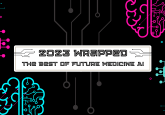Have you heard? There’s a new chatbot in town…ChatPandaGPT

The latest development in AI introduces us to a novel large language model that can revolutionize drug discovery and development: ChatPandaGPT.
A novel large language model termed ChatPandaGPT has just been developed by Insilico Medicine (Pak Shek Kok, Hong Kong), an AI-driven biotechnology company that aims to advance drug discovery through an AI platform. The model combines the company’s PandaOmics platform with the latest developments in AI chatbots. This comes as the most recent and promising AI chatbot application in medicine, with the potential to accelerate drug discovery and development by optimizing investigation and analysis of large datasets.
No, this is not ChatGPT. Think more along the lines of you (ChatGPT) vs the guy she tells you not to worry about (ChatPandaGPT). Although ChatPandaGPT is unlikely to completely outshine ChatGPT, its medical specialty makes it a welcome addition to the healthcare industry, particularly given ChatGPT’s shortcomings when it comes to spreading false or misleading medical advice.
Like ChatGPT, ChatPandaGPT is essentially a natural language platform that supports human-like conversations and has the ability to competently manipulate and analyze huge datasets. However, unlike ChatGPT, ChatPandaGPT relies on a specialized knowledge base containing highly detailed information regarding pharmaceutical development, molecular biology and therapeutic target identification, as opposed to the broad and generalized quantity of data that ChatGPT was educated on. In this case, it really is quality over quantity.
Nowadays, there is a ridiculously huge volume of scientific data available. One of the biggest challenges that befalls modern scientific research is the efficient location and identification of relevant information. There are infinite sources of scientific knowledge, from journal articles and books to databases and conferences, but it is impossible for researchers to read all this information and keep fully up to date with current research.
With the sheer volume of data only growing, it is becoming even more difficult to identify knowledge gaps and to access the relevant information. Although computational tools and algorithms have improved over time, they still lack the ability to reliably analyze and identify causal links from heterogenous data.
ChatPandaGPT may help to automate some of this data analysis. Utilizing both machine learning algorithms and natural language processing enables ChatPandaGPT to offer more individualized and valuable outputs to platform users, making the discovery of probable therapeutic targets and biomarkers faster and more efficient.
PandaOmics is an AI drug discovery platform that identifies drug targets for a given disease by performing omics data analysis in relation to previous information from publications, clinical trials and grant applications. PandaOmics extricates relevant information from these sources and generates a graph that links the biological functions of genes, molecular mechanisms of diseases, chemical compounds and biological processes, as well as divulging the most promising biomarkers and therapeutic targets.
The algorithm takes into account numerous factors, including safety, novelty, confidence, commercial tractability, druggability and other essential characteristics that govern judgements on target choices, to provide the best optimal results for potential therapeutic targets.
Combining PandaOmics with a large language model chatbot, ChatPandaGPT provides a more effective, personalized and intuitive way to explore data relating to drug discovery and development. Additionally, ChatPandaGPT is accessible anytime and can handle numerous inquiries at once with no risk of growing worn out or making errors, unlike the human limitations of scientists.
“This integration represents a significant step forward in our efforts to provide researchers with the tools they need to make important discoveries in the field of drug discovery,” concluded Frank Pun, head of the PandaOmics application scientists team. This new AI tool could enable researchers to discover breakthroughs and insights more effectively through traversing and analyzing vast complex datasets.





